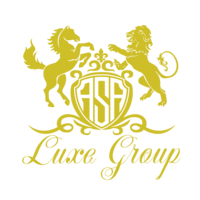Priming of surfaces
Have you ever wondered what goes before painting this or that part of the room, element of the car or any other surface. That's right — the primer. Without it, unfortunately, nothing will work. So today in this material we will tell you about how this process takes place in our ASA Luxe group brigade.

Primer is an impregnation of the working surface with a special liquid. It performs a number of functions: leveling the surface, protection against corrosion and decay, promotes good adhesion of surfaces (walls with wallpaper, paint or tile). With a properly chosen primer, the surface will have an even color of paint, and the coating will hold better. Putty, paint or glue can be applied on it more evenly, so there is a significant saving of materials. Once the surface has been primed, the risk of peeling and cracking painted walls, wobbly and barely held tiles, and air bubbles under wallpaper and peeling wallpaper is greatly reduced.

When you look closely, walls prepared for wallpapering are covered with numerous roughnesses and irregularities, which can disturb the smooth surface of wallpaper or affect the quality of adhesion of the wall with the decorative coating. Depending on the type, the mechanisms of action of the primer differ:
— A reinforcing primer binds the microparticles of the surface together. The result is an even surface. Paint and glue can be applied on it well. This primer is white in color because it contains large particles of binding component. These particles are not deeply absorbed.
— A reinforcing primer binds the microparticles of the surface together. The result is an even surface. Paint and glue can be applied on it well. This primer is white in color because it contains large particles of binding component. These particles are not deeply absorbed.

What primer our experts choose
Usually a primer consists of a mixture of different pigments, binders and fillers. It is needed to level the surface, to strengthen it. In addition, the primer covers the surface with a continuous waterproof film. Priming mixture is selected depending on the material and the condition of the surface to be treated. If the substrate is in good condition that does not require additional reinforcement, it is sufficient to treat it only with a reinforcing primer. It will cover the top layer of the surface with a film and dedust it.
Tools that can be used to apply the primer
We usually use not only tools, but also additional chemicals
- 1The primer itself
- 2Putty
- 3A chemical flush or solvent
- 4Personal protective equipment (goggles and gloves)
- 5Sanding machine or fine sandpaper
- 6Trowel, special scraper
- 7Brushes or rollers on short and long handle
- 8Primer tray/bathtray
Priming steps
Step 1
Use a trowel, scraper or solvent to clean the work surface of old wallpaper, paint, rust, etc. All existing irregularities up to 1.5 centimeters in size are smoothed with a thick primer or filler. Such irregularities will take about a week to dry.
Step 2
After cleaning the surface and smoothing out major irregularities, you can begin sanding and priming. The primer is poured into the prepared tub. A roller or brush is soaked evenly in the tub.
And finally, step 3
The entire surface is carefully treated with primer. Real professionals do not forget about the wall joints and the space behind the radiators. If the primer is applied in several layers, each of them must be allowed to dry completely. The higher the temperature in the room, the faster the primer will dry. In principle, it makes sense. At a temperature of 20-23 degrees Celsius it will take a day, and at a temperature of only 5-10 degrees Celsius it will take about 4 days.
Our company ASA Luxe group offers turnkey construction and repair services. We undertake all the work on the preparation of the object, the selection of building materials and will realize all your wishes
Contact us for a project
France
980, Avenue du Peyrat 83310 Grimaud
+33 6 22 35 19 05
+33 6 26 55 03 40
980, Avenue du Peyrat 83310 Grimaud
+33 6 22 35 19 05
+33 6 26 55 03 40
Subscribe
© 2022 ASA LUXE GROUP

